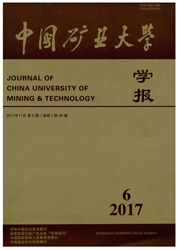

 中文摘要:
中文摘要:
为了找出准噶尔盆地中部深层隐蔽油气藏的成藏机理与富集规律,通过车-莫古隆起形成演化及其不整合的控藏效应、油气充注历史和储层演化的配置关系、超压发育机制与隐性通道的输导效应三方面进行综合分析,结果表明:K/J不整合古土壤层发育连续,渗透率小于0.1md,垂向封盖能力强、半风化岩层CIA指数小于75%,化学风化作用弱,侧向非均质性强;油气充注时刻储层物性较好,孔隙度为10%~15%;4500-5500m以下发育静态超压,最高压力系数达2.2,大量发育天然水力破裂.永进地区深层隐蔽油气藏同时受油气充注时间、优势榆导通道、圈闲空间类型等成藏因素的控制.
 英文摘要:
英文摘要:
For studying the accumulation mechanism and enrichment rule in deeply-buried subtle oil/gas reservoirs in the hinterland of Junggar basin, the evolution and effects on oil accumulation of Che-mo palaeohigh and its related K/J unconformity, the relationship between charging histories and reservoirs evolution, the mechanism of overpressure development and subtle conduit pathway were amply discussed for Yongjin oilfield. The results show that the paleo-weathered soil layer of K/J unconformity develops widely and takes on favorable vertical sealing property (vertical permeability is less than 0. 1 md), the semi-weathered layer experiences mainly physical weathering (CIA index is less than 75 %) and has strong lateral heteroge- neity; the reservoirs take on high porosity (from 10% to 15%) as hydrocarbon charging; and the strong static overpressure and natural hydraulic fractures develop widely under 4 500- 5 500 m (the maximal pressure coefficient is close to 2.2). The main controlling factors of hydrocarbon accumulation include charging time, main conduit pathway and trapping space type.
 同期刊论文项目
同期刊论文项目
 同项目期刊论文
同项目期刊论文
 Evidence for multiple stages of oil cracking and thermochemical sulfate reduction in the Puguang gas
Evidence for multiple stages of oil cracking and thermochemical sulfate reduction in the Puguang gas 期刊信息
期刊信息
